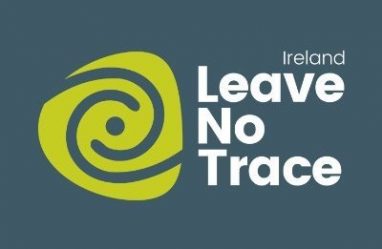The Importance of Biodiversity
Biodiversity means the variety of living things (plants and animals) in any given area. Naturally, this will vary from place to place, for example the variety of living creatures on a bare limestone surface will be very different to the variety living in a tidal rock pool. The importance of understanding biodiversity is that biodiversity is a measure of the health of the ecosystem and the environment where we live. Reducing biodiversity due to pollution, disturbance or loss of habitat reduces the ability of an ecosystem to recover, which will ultimately threaten our food supply. There is growing worldwide concern that the actions of humanity are causing a ‘Mass Extinction’ of species comparable to major Mass Extinctions in the geological past.
As a designated UNESCO Global Geopark we encourage all efforts to protect and promote biodiversity.
Protecting Biodiversity
Biodiversity (and the habitats that support it) is formally protected in many areas as Special Areas of Conservation (SACs) or Special Protected Areas (SPAs) under the EU Habitats Directive. This legislation gives a voice to the living things that cannot speak for themselves. This legislation is enforced by the National Parks and Wildlife Service. However, even in areas not legally protected by legislation biodiversity needs to be protected, encouraged and supported by everybody. This can be done by reducing (or eliminating) your use of herbicides and insecticides, planting native species and letting areas just grow ‘wild’. For more information from the Clare Biodiversity Officer visit https://www.clarecoco.ie/services/planning/biodiversity/
Discovering, recording and promoting Biodiversity
The National Biodiversity Data Centre (www.biodiversity.ie) run by the Heritage Council is a wonderful site that provides a lot of information on the distribution of a wide variety of organisms in Ireland, as well as providing training resources. Learn what to look for and get out and start finding what is living in your neighbourhood.
A sample of the Biodiversity in the Burren and Cliffs of Moher UNESCO Global Geopark
Marine Environment
Along our coasts live a wide range of animals and plants. They form an important series of communities that we rarely see as they spend most of their time below sea level. They are a ‘barometer’ for the health of our piece of this planet; if they are not thriving it is usually because we are doing something we shouldn’t be doing that is having an adverse effect on them.
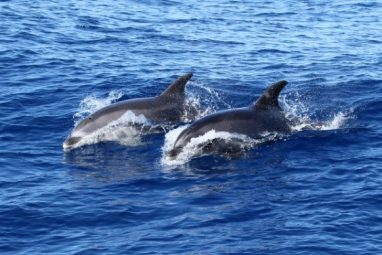
Tursiops truncates. Image Credit: Saxifraga – Henk Baptist
Vertebrates
- Mammals: Our coastal waters are home to a relatively small number of large mammals such as, bottlenose dolphins (Tursiops truncates), harbour seals and otters. We even see humpback whales and Killer whales occasionally.
- Fish: There is a good variety of fish living in Galway Bay such as mackerel (Scomber scombrus), pollack (Pollachius pollachius), wrasse (Symphodus melops), mullet (Mullus Barbatus), dogfish (Scyliorhinus canicula), spurdog (Squalus acanthias), herring (Clupea Harengus), sprat (Sprattus sprattus), conger eel (Conger conger), angel sharks/monkfish (Squatina squatina), flapper skate (Dipturus intermedia), flounder (Platichthys flesus), bass (Dicentrachus Labrax), tope (Galeorhinus galeus), porbeagle shark (Lamna nasus ), plaice (Pleuronectes platessa), cod (Gadus morhua), John dory (Zeus faber), bull huss (Scyliorhinus stellaris), weever fish (Echiichthys vipera), basking shark (Cetorhinus maximus ) and more…
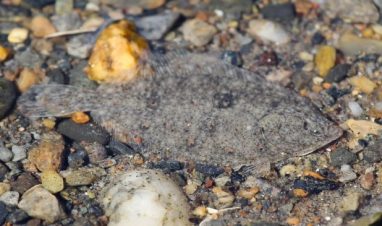
Platichthys flesus, Image Credit: Saxifraga-Bart Vastenhouw
- Birds: The most important nesting site for seabirds is the Cliffs of Moher. Around 60,000 birds nest along the cliffs including; puffin (Fratercula arctica), guillemot (Uria aalge), razorbill (Alca torda) and kittiwake (Rissa tridactyla). It is also an important site for other birds such as chough (Pyrrhocorax pyrrhocorax), Peregrine falcon (Falco peregrinus) and Black-backed gulls (Larus marinus).A lot of birds winter here along our beaches and mud flats including; ringed plover (Charadrius hiaticula), bar-tailed godwit (Limosa limosa), turnstone (Arenaria interpres), wigeon (Anas penelope), great northern diver (Gavia immer), red-breasted merganser (Mergus serrator), Brent goose (Branta bernicla hrota), sandwich tern (Sterna sandvicensis), common tern (Sterna hirundo), teal (Anas crecca), shoveller (Anas clypeata), golden plover (Pluvialis apricaria), lapwing (Vanellus vanellus), dunlin (Calidris alpina ), curlew (Numenius arquata), redshank (Tringa totanus ), black-headed gull (Larus ridibundus), common gull (Larus canus), cormorant ( Phalacrocorax carbo), heron (Ardea cinerea) and more…For more information on Galway Bay SAC visit https://www.npws.ie/protected-sites/sac/000268
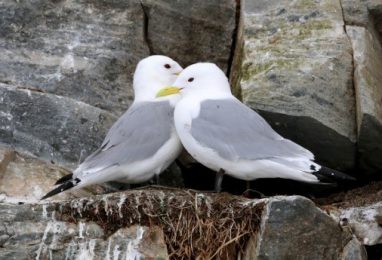
Rissa tridactyla, Image Credit: Saxifraga-Bart Vastenhouw
Invertebrates
The invertebrates often get overlooked because they are small and often hide during the day or at low tide. Common examples that we most commonly see include mussels, periwinkles, anemones, sea urchins, starfish, crabs, jellyfish and of course the oyster. However, there are a multitude of other equally important creatures that live along our coast such as the odd looking sea cucumber, the bivalves (Tellina tenuis, Cerastoderma edula, Macoma balthica, Scrobicularia plana), polychaete worms (Glycera tridactyla, Nephtys hombergii, Arenicola marina, Cirriformia tentaculata) and the common shrimp (Crangon crangon).
Seaweed: Seaweed is a general term for marine algae. They have a wide variety of shapes and sizes. The North Clare coast is a seaweed biodiversity hotspot, over 300 species have been recognized here. These offer habitats and protection for many marine creatures.Identifying species can be difficult but many typical seaweeds found along our coast are easy to identify such as bladderwrack (Fucus vesiculosus), and the thick stalked kelp (Laminaria hyperborea). Those who eat seaweed will recognise Dilisk (Palmaria palmata).Zostera (Eelgrass) is a bit different; it is actually a flowering plant that adapted to living in the sea. These underwater sea grass meadows are an important food source for wildfowl such as Brent geese.
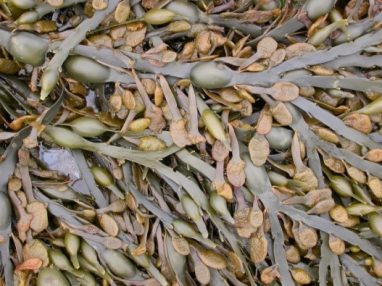
Bladderwrack, Image Credit – Saxifraga -Peter Meininger
For some current research on Burren invertebrates by the National Parks and Wildlife Service click here.
On Land
The range of creatures we share our space with is incredible, and despite the bare look of much of the Burren it is a biodiversity hotspot, which is why is it largely protected under Special Areas of Conservation legislation.
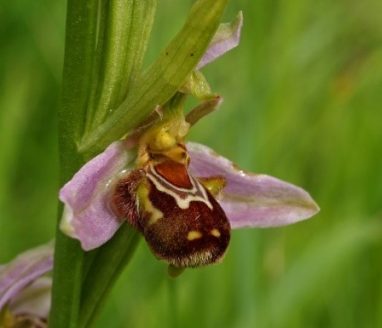
Ophrys apifera, Image Credit Saxifraga -Hans Dekker
- Orchids. Plants are particularly important and the famous orchids of which there are 23 species to be found such as Bee orchid (Ophrys apifera), Bird’s nest orchid (Neottia nidus-avis), Common spotted orchid (Dactylorhiza fuchsii), Common Twayblade (Neottia ovata), Fly orchid (Ophrys insectifera), Early purple orchid (Orchis mascula) and lots more are the highlight for many. https://burrenbeo.com/the-burren/natural-heritage/flora/
- Other flowering plants. flowering plants such as the Spring Gentian, Bloody Cranesbill, Devil’s bit Scabious, Eyebright and hundreds more. For more information visit https://www.burrennationalpark.ie/gallery-wildlife/flora/
- Bryophytes (lichens/mosses). The unassuming lichens and liverworts (such as Drepanocladus lycopodioides and Calliergon trifarium) are as equally important as the more famous flowering plants.
- Butterflies. Butterflies live in very close association with the flowering plants and 27 different butterflies are known from here https://www.burrennationalpark.ie/dromore-wood/dromore-invertebrates/
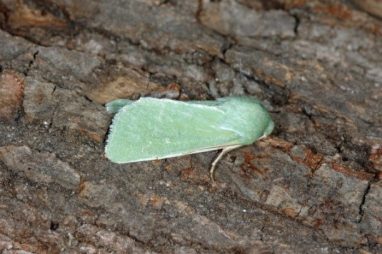
- Moths. There are dozens of species of moths in the Burren, some (such as the Burren Green, Calamia tridens occidentalis) are not known from anywhere else in Ireland and the UK. Moths are less conspicuous than butterflies as many are largely nocturnal. Some of the many species recorded here include: Hadena contigua (Beautiful Brocade), Apatele euphorbiae myricae (Sweet-gale Moth), Aporophyla lutulenta luneburgensis (Deep-brown Dart), Euxoa tritici (White-line Dart), Parasemia plantaginis (Wood Tiger), Setina irrorella (Dew Moth), Trichiura crataegi (Pale Oak Eggar), Lithosia quadra (Four-spotted (or Large) Footman) and many more..for more information visit: https://www.clarelibrary.ie/eolas/coclare/places/the_burren/lepidoptera.html
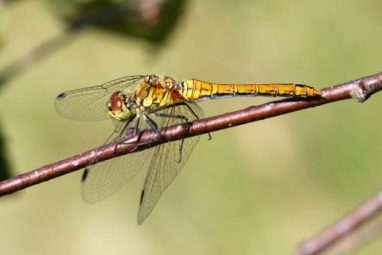
Sympetrum sanguineum., Image Credit -Saxifraga-Henk Baptist
- Dragonflies and Damselflies. Usually seen hovering and actively hunting near water, the beautiful colours of these aerial predators are very impressive, some you might see here include: Hairy Dragonfly (Brachytron pretense), Black-tailed Skimmer (Orthetrum cancelatum), Common Darter (Sympetrum striolatum), Brown Hawker (Aeshna grandis) and Ruddy Darter Dragonfly (Sympetrum sanguineum).
We are fortunate in what we have, and we value what we have. Sustainable tourism and farming practices can help to protect our biodiversity. When you are out and about in the Burren, bring a camera, take nothing but photos and Leave No Trace: https://www.leavenotraceireland.org/
